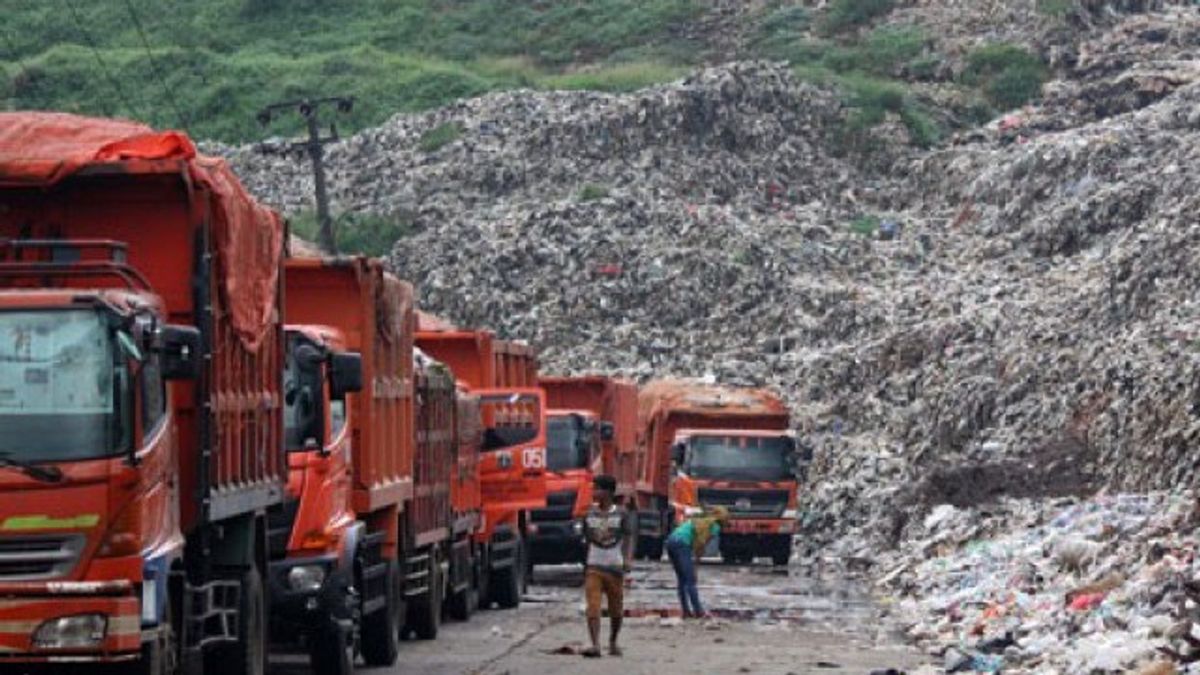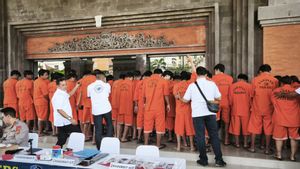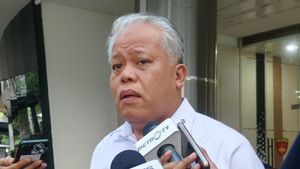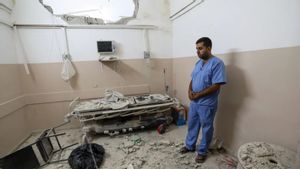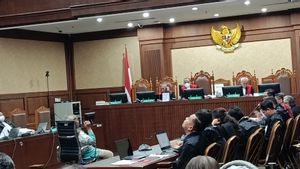JAKARTA - Head of the DKI Environmental Agency (LH) Asep Kuswanto said that his party has four waste management patterns in the capital city during the rainy season. The patterns are normal mode, alert mode, flooded mode, and rehabilitation mode.
"Normal mode at the beginning of the rainy season, alert mode for flood alerts such as the high water level of Katulampa and high rainfall intensity, inundated mode, namely when the flood emergency response status is determined by BPBD and finally, and rehabilitation mode after the occurrence of flood inundation," said Asep told reporters, Thursday, October 14.
Asep said this was included in one of the anticipations for handling waste in the rainy season in addition to ensuring the readiness of human resources and infrastructure.
Asep said, the Orange UPK Troops of the Water Agency also continue to anticipate and ensure that no garbage clogs rivers, connecting channels, and water gates.
“The UPK of the Water Agency has also anticipated cleaning of garbage along connecting channels and sluice gates. Then there are officers to monitor the development of the situation in each location prone to piles of garbage when there is a flood of shipments," he said.
The garbage cleaning was carried out at a number of points, such as the Manggarai Sluice Gate, Kampung Melayu Bridge, Season City Bridge and other points prone to piles of shipped waste.
"When there is a pile of garbage, other than the existing officers on the segment, additional personnel and fleets will immediately move to that location. We are on standby 24 hours,” explained Asep.
Ahead of the rainy season, DKI Jakarta Governor Anies Baswedan held a Ceremony for Preparedness for the Rainy Season, at the South Monas Cross Field, Central Jakarta, yesterday.
Anies Baswedan warned his residents to ensure the safety of power lines because they have the potential to pose a risk of accidents when floods occur as a result of extreme rainfall.
"All people must start to ensure that the area, village conditions, houses are relatively safe, especially related to electricity and gas because during the rainy season there is often a risk of accidents," said Anies.
According to Anies' analysis, the most common cause of death during the peak of the rainy season is actually being electrocuted. That's why he hopes that the community and related agencies will participate in ensuring the safety of electrical cable connections as an early anticipation.
Anies targets zero casualties during the peak of the rainy season in Jakarta.
"Rain comes and goes but don't leave the death toll, that means anticipating from the start. The most common cause of death when it rains is electric shock, make sure in the standby phase, this security is carried out," he said.
The English, Chinese, Japanese, Arabic, and French versions are automatically generated by the AI. So there may still be inaccuracies in translating, please always see Indonesian as our main language. (system supported by DigitalSiber.id)
